Abstract
INTRODUCTION: Healthcare workers (HCWs) are exposed to bloodborne infections by pathogens, such as HIV, and hepatitis B and C viruses, as they perform their clinical activities in the hospital. Compliance with universal precautions has been shown to reduce the risk of exposure to blood and body fluids. This study was aimed at assessing the observance of universal precautions by HCWs in Abeokuta, Ogun State, Nigeria. SUBJECTS AND METHODS: The study was conducted in September 2003 in Abeokuta metropolis, Ogun State, Nigeria. The respondents were doctors, trained and auxiliary nurses, laboratory scientists and domestic staff. They were selected through a multistage sampling technique from public and private healthcare facilities within the metropolis. The instrument was an interviewer-administered, semistructured questionnaire that assessed the practice of recapping and disposal of used needles, use of barrier equipment, handwashing and screening of transfused blood. RESULTS: There were 433 respondents, 211 (48.7%) of which were trained nurses. About a third of all respondents always recapped used needles. Compliance with nonrecapping of used needles was highest among trained nurses and worst with doctors. Less than two-thirds of respondents (63.8%) always used personal protective equipment, and more than half of all respondents (56.5%) had never worn goggles during deliveries and at surgeries. The provision of sharps containers and screening of transfused blood by the institutions studied was uniformly high. A high percentage (94.6%) of HCWs observed handwashing after handling patients. The use of barrier equipment was variable in the institutions studied. CONCLUSION: Recapping of used needles is prevalent in the health facilities studied. Noncompliance with universal precautions place Nigerian HCWs at significant health risks. Training programs and other relevant measures should be put in place to promote the appropriate use of protective barrier equipment by HCWs at all times.
Full text
PDF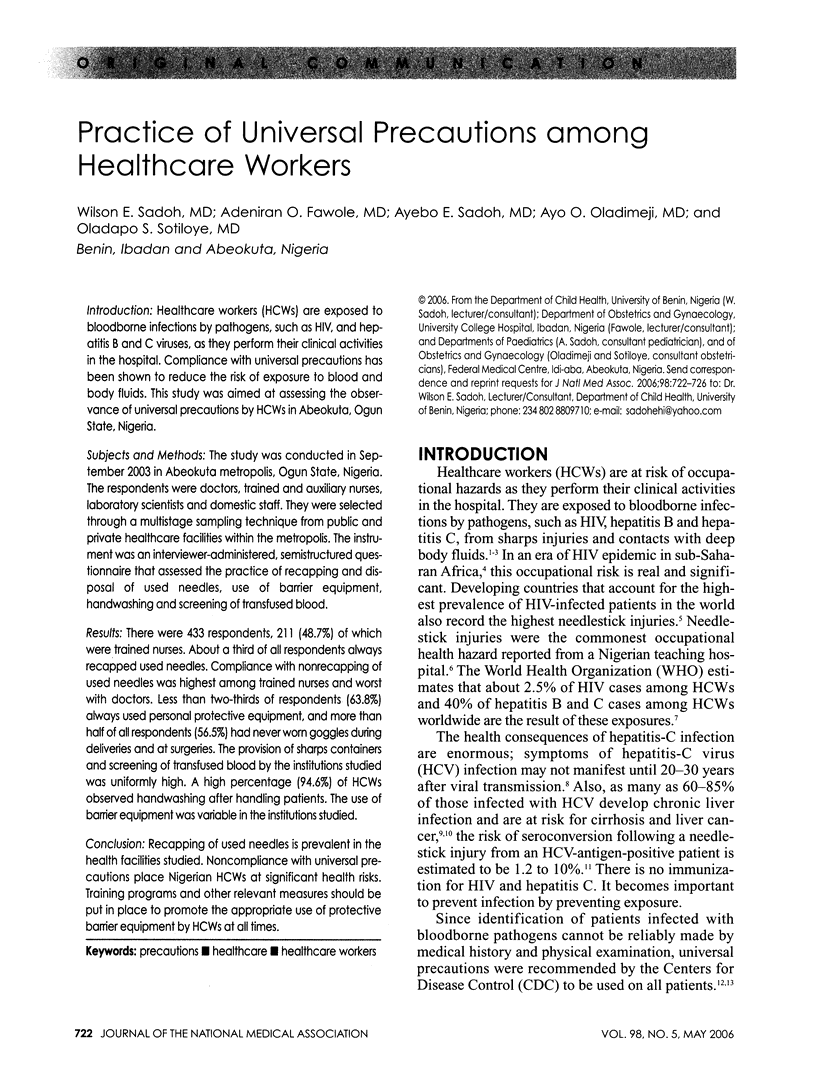
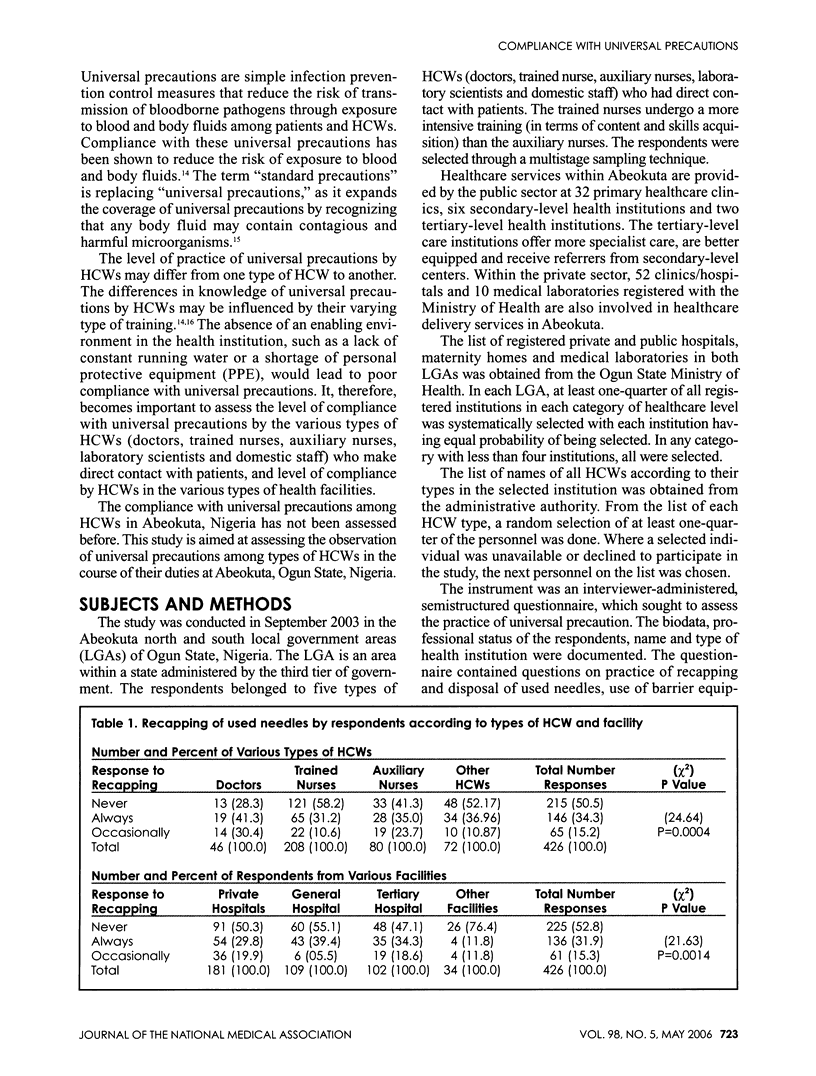
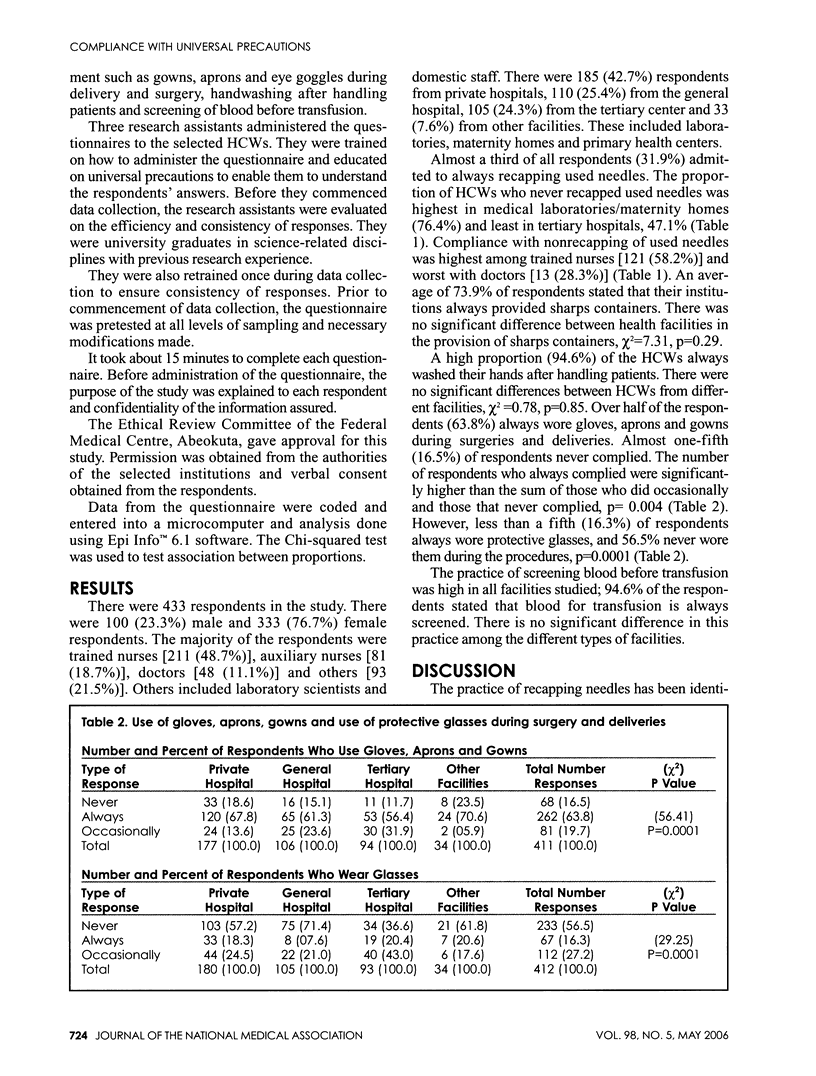
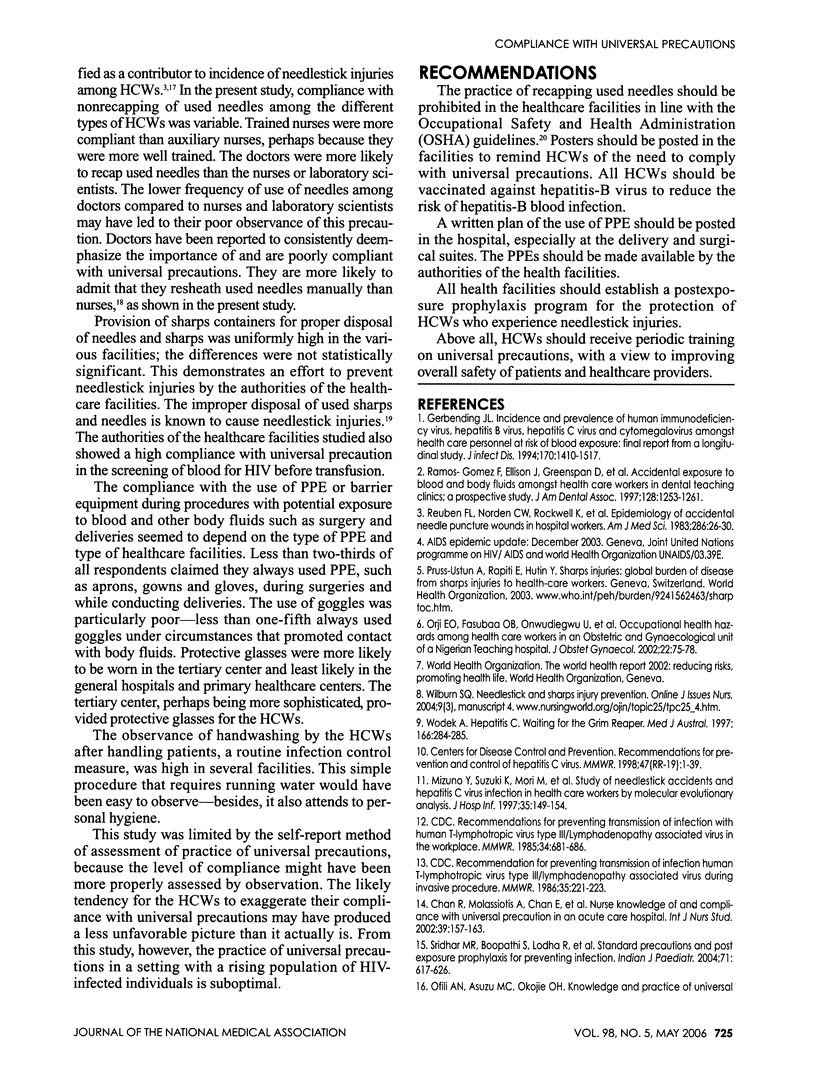
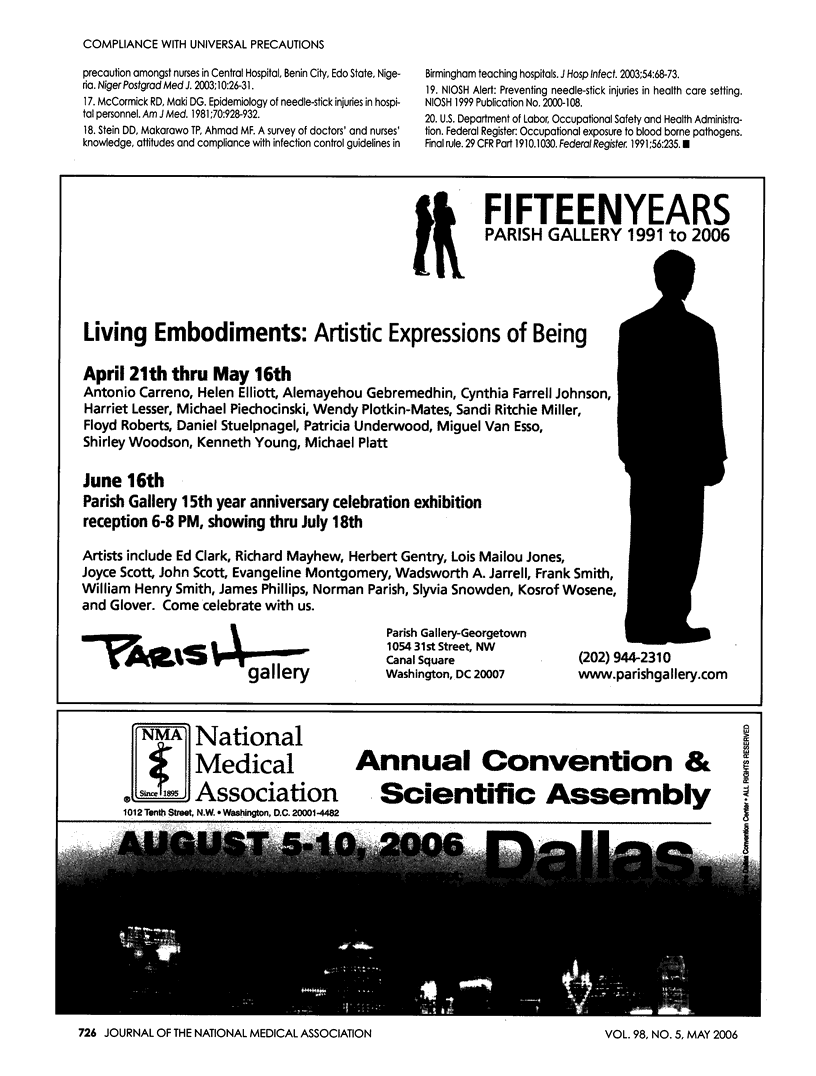
Selected References
These references are in PubMed. This may not be the complete list of references from this article.
- Chan Regina, Molassiotis Alexander, Chan Eunice, Chan Virene, Ho Becky, Lai Chit-ying, Lam Pauline, Shit Frances, Yiu Ivy. Nurses' knowledge of and compliance with universal precautions in an acute care hospital. Int J Nurs Stud. 2002 Feb;39(2):157–163. doi: 10.1016/s0020-7489(01)00021-9. [DOI] [PubMed] [Google Scholar]
- McCormick R. D., Maki D. G. Epidemiology of needle-stick injuries in hospital personnel. Am J Med. 1981 Apr;70(4):928–932. doi: 10.1016/0002-9343(81)90558-1. [DOI] [PubMed] [Google Scholar]
- Mizuno Y., Suzuki K., Mori M., Hayashi K., Owaki T., Hayashi H., Kumada K., Ohba K., Mizokami M. Study of needlestick accidents and hepatitis C virus infection in healthcare workers by molecular evolutionary analysis. J Hosp Infect. 1997 Feb;35(2):149–154. doi: 10.1016/s0195-6701(97)90103-1. [DOI] [PubMed] [Google Scholar]
- Orji E. O., Fasubaa O. B., Onwudiegwu Uche, Dare F. O., Ogunniyi S. O. Occupational health hazards among health care workers in an obstetrics and gynaecology unit of a Nigerian teaching hospital. J Obstet Gynaecol. 2002 Jan;22(1):75–78. doi: 10.1080/01443610120101781. [DOI] [PubMed] [Google Scholar]
- Ramos-Gomez F., Ellison J., Greenspan D., Bird W., Lowe S., Gerberding J. L. Accidental exposures to blood and body fluids among health care workers in dental teaching clinics: a prospective study. J Am Dent Assoc. 1997 Sep;128(9):1253–1261. doi: 10.14219/jada.archive.1997.0402. [DOI] [PubMed] [Google Scholar]
- Ruben F. L., Norden C. W., Rockwell K., Hruska E. Epidemiology of accidental needle-puncture wounds in hospital workers. Am J Med Sci. 1983 Jul-Aug;286(1):26–30. doi: 10.1097/00000441-198307000-00004. [DOI] [PubMed] [Google Scholar]
- Sridhar M. R., Boopathi S., Lodha Rakesh, Kabra S. K. Standard precautions and post exposure prophylaxis for preventing infections. Indian J Pediatr. 2004 Jul;71(7):617–625. doi: 10.1007/BF02724121. [DOI] [PubMed] [Google Scholar]
- Stein A. D., Makarawo T. P., Ahmad M. F. R. A survey of doctors' and nurses' knowledge, attitudes and compliance with infection control guidelines in Birmingham teaching hospitals. J Hosp Infect. 2003 May;54(1):68–73. doi: 10.1016/s0195-6701(03)00074-4. [DOI] [PubMed] [Google Scholar]
- Wodak A. Hepatitis C: waiting for the grim reaper. Med J Aust. 1997 Mar 17;166(6):284–285. doi: 10.5694/j.1326-5377.1997.tb122311.x. [DOI] [PubMed] [Google Scholar]


